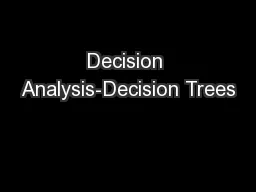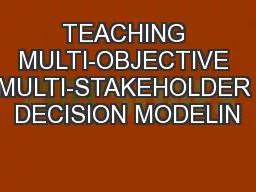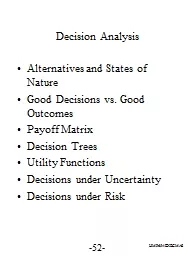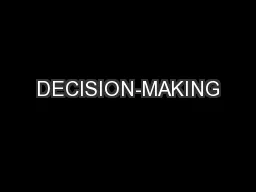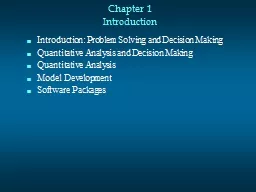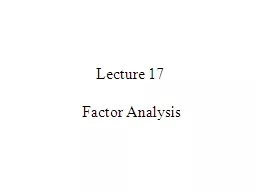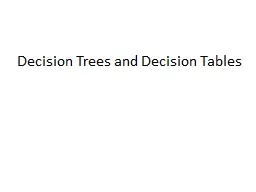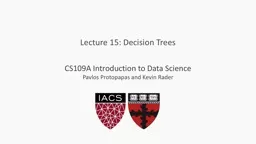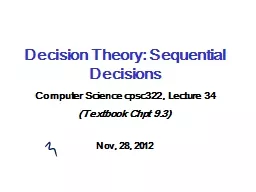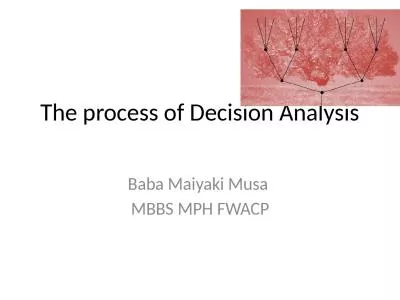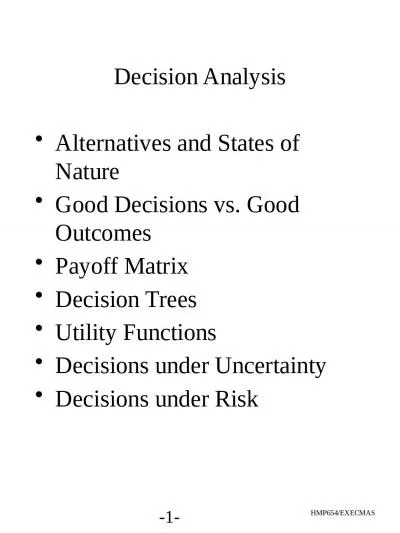PPT-Decision Analysis Lecture 10
Author : danika-pritchard | Published Date : 2019-06-29
Tony Cox My email tcoxdenveraolcom Course web site httpcoxassociatescomDA Agenda Problem set 8 solutions Problem set 9 Hypothesis testing statistical decision
Presentation Embed Code
Download Presentation
Download Presentation The PPT/PDF document "Decision Analysis Lecture 10" is the property of its rightful owner. Permission is granted to download and print the materials on this website for personal, non-commercial use only, and to display it on your personal computer provided you do not modify the materials and that you retain all copyright notices contained in the materials. By downloading content from our website, you accept the terms of this agreement.
Decision Analysis Lecture 10: Transcript
Download Rules Of Document
"Decision Analysis Lecture 10"The content belongs to its owner. You may download and print it for personal use, without modification, and keep all copyright notices. By downloading, you agree to these terms.
Related Documents


